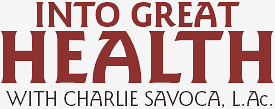Orthopedic Acupuncture
ORTHOPEDIC ACUPUNCTURE
Orthopedic acupuncture is an organized system which uses a modern understanding of neuroanatomy, pain referral patterns, and the musculoskeletal system to treat myofascial pain and dysfunction; it differs from classical TCM (Traditional Chinese Medicine) acupuncture in approach and methods. The orthopedic approach relies more on anatomy and functional assessment testing. Orthopedic acupuncture is used for acute and chronic pain conditions due to injuries from trauma, overuse (repetitive strain), work-related, auto accidents, and sports. It is also effective in treating pain from osteoarthritis and rheumatoid disease. Specific effects are intended on the tissues and nervous system to speed up healing, manage pain, and improve function and performance.
TRIGGER POINTS AND MOTOR POINTS
Orthopedic acupuncture techniques include trigger point release (areas of myofascial knots or tight bands in soft tissues) and/or motor point stimulation. Motor points are found where the motor nerve inserts into the muscle belly or where the motor nerve inserts at the neuromuscular junction. Treatment of motor points are indicated by the assessment of muscle strength with resistance testing.
Muscle inhibition can be the result of pain (acute or chronic), trauma, repetitive stress, surgery, or changes in the joint (such as osteoarthritis). Whenever injury or chronic pain occurs, nerve signals to the muscle are “turned off”. Maladaptation can occur in the soft tissues creating adhesions, tight bands, nodules (trigger points), and scar tissue that become the source of further pain and dysfunction. Muscles are not working at their optimal functional capacity and the result is often a cycle of chronic inflammation.
Treatment with acupuncture, electrical stimulation, and soft-tissue release can help reverse these effects. Simply put, nerve signal to the muscles get “turned off”. Treatment works to “turn on” motor muscle function by creating changes in the nerve signals and reducing neurogenic inflammation. Results of orthopedic acupuncture are fast, reliable, and effective to restoring function and reducing pain. It can help correct dysfunction and provide lasting clinical results.
SOFT TISSUE MYOFASCIAL RELEASE
Specific manual muscle release and mobilization are critical to removing adhesions and restoring motor function to the musculoskeltal system. I incorporate hands-on soft tissue myofascial release into my treatments and consider it a very important aspect of my approach to the treatment of orthopedic conditions.
Conditions treated include low back and neck pain, shoulder tendinitis and rotator cuff injuries, knee and hip pain due to osteoarthritis or trauma, tennis elbow or golfer’s elbow (epicondylitis), ankle sprain, plantar fascitis, and carpal tunnel syndrome among others.
POST-SURGERY
A special application of orthopedic acupuncture and myofascial release is for rehabilitation in post-surgery conditions. Surgery can be viewed as a type of “trauma” which creates scar tissue, trigger points, adhesions, and motor inhibition in the soft tissues surrounding the area of surgery. Like any injury, muscles are tested for weakness and treated to re-balance the musculoskeletal system. This would include surgeries for hip replacement, knee replacement, shoulder repair, lower back, and carpal tunnel.
Soft tissue mobilization of the fascia is also important for post-surgery conditions to release adhesions and restore function to muscles surrounding the joints involved. Imbalances, maladaptations and compensations in the musculoskeletal system often occur following surgeries and should be addressed as part of the recovery program.
DRY NEEDLING
As a clarification, you will also hear the term “dry needling”. Dry needling is typically used to treat muscles, ligaments, tendons, fascia, scar tissue, peripheral nerves, for the management of a variety of neuromusculoskeletal pain syndromes and movement issues. It mostly utilizes the release of myofascial trigger points. When dry needling is applied to your muscles and tissues, it can decrease tightness, increase blood flow, improve range of motion and reduce local and referred pain. Dry needling also improves performance and speeds up healing. In fact, dry needling is a one of many techniques of orthopedic acupuncture with the intention to treat and release trigger points.
Dry needling is a subject of debate between Licensed Acupuncturists (L.Ac.) and other professions (such as physical therapists) who claim that it is not a form of acupuncture (which it is) in order to go around state regulations. There is no requirement for extensive training and no regulatory agency controls training, licensing, or supervision for this procedure when done by other professionals whose scope of practice does not include acupuncture.
